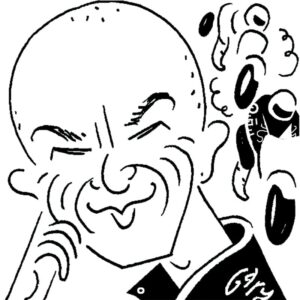Mat Oxley: Ducati's historic engines
“Few motorcycles excite emotion among fans like Ducati’s v-twins did”

The aural, sensory treat of a big, booming v-twin does something to people. It’s surely the only reason that Harley-Davidsons are still popular.
But on the track? There’s no arguing with the limits of piston speed. Not usually. Ducati’s engineer Fabio Taglioni designed its v-twin in 1970. Taglioni was an old friend of Enzo Ferrari, who had tried to lure him to Maranello. For some time Ducati race bikes were also adorned with Francesco Baracca’s prancing horse, because Taglioni’s father had flown with Baracca in the First World War.
Taglioni believed in the perfect balance of a 90-degree vee engine and in the advantages of desmodromic valve actuation, which became Ducati’s trademarks. His greatest achievement was to make desmo technology successful in 125cc grand prix races in the 1950s, then commercially viable in the 1970s. Ducati v-twins scored their first major successes at Imola in 1972 and on the Isle of Man in 1978, where Mike Hailwood made grown men cry with a fairy-tale comeback ride.
Both these victories are now part of motorcycle folklore, cherished like Biblical miracles. However, the world moved on. Taglioni’s v-twins couldn’t compete with four-cylinder Japanese machines.
By 1985 Ducati stood on the brink of bankruptcy, despite a new eight-valve, liquid-cooled v-twin designed by Taglioni’s successor Massimo Bordi, to replace the original four-valve, air-cooled unit. The new engine won races, but only in categories that purposefully shunned the modern world, like Daytona’s Battle of the Twins event, in which Ducati fought with Harley, Moto Guzzi, BMW and other brands left behind by fast-moving Japanese tech.
Ducati’s salvation was the 1988 creation of the World Superbike Championship. This was motorcycling’s own tin-top series, for pimped-up road bikes. Ducati homologated Bordi’s eight-valve v-twin and it proved immediately competitive. At last, the firm’s motorcycles had found a global stage upon which they could excel.
Blood-red and booming, Ducati’s v-twins grew – from 851cc to 888 to 916 to 996 and 999 – to dominate World Superbike racing, taking eight world titles between 1990 and 1999. Indeed, the machines became the championship’s main attraction, their twin exhausts creating a rumbling soundtrack that stirred the souls of bike fans like no other. The Ducatisti – bike racing’s tifosi – nicknamed the big v-twin Il pompone, a play on the Italian word for pump and a nod to the throb of the engine at tick-over.
Bordi’s engine, created with assistance from Cosworth, was a masterpiece. His desmodromic top end was a maze: eight valves, 16 cams and 16 rockers. The engine was painstakingly developed over the years. From slightly less than 100 horsepower at 9500rpm in 1986 to 175 at 11,500 by the turn of the century. Bore and stroke were increased, until piston life was down to less than two hours, requiring an engine change halfway through WSB’s usual two Sunday races. At the same time cams increased in lift and duration until valve-to-valve contact loomed.
Eventually a redesign of the cylinder head was done by Angiolino Marchetti, an ex-Ferrari designer who had created desmodromic heads for the company’s V12 F1 car. During this period WSB regulations gave twin-cylinder motorcycles a 250cc advantage over four-cylinder machines, so Ducati’s main rivals were 750cc fours from Honda, Kawasaki, Suzuki and Yamaha. However, lobbying by the Japanese brands forced a rewrite of the rules in 2003 to permit 1000cc fours. Ducati threatened to quit if twins weren’t granted a new capacity advantage.
WSB without Ducati was unthinkable, so the rules were rewritten again to allow 1200cc twins. So the engine grew more, to a radically over-square 1198cc, producing 205 horsepower at 11,500rpm. This engine measured 112mm by 60.8mm, against Bordi’s original of 88mm by 61.5mm. Ducati was getting close to the limits of bore/stroke ratio and piston speed. Finally those limits were reached.
Ducati won its last WSB crown in 2013, with the 1198. Since then 1000cc fours have proved unbeatable, with Kawasaki taking a clean sweep of the last five titles with Briton Jonathan Rea. Ducati had to do something. Last year the company contested WSB with a new V4, essentially a road-going replica of its 220mph MotoGP bike. The Panigale (named after Borgo Panigale, the Bologna district where Ducati is based) made 235 horsepower at 16,000 and might have won the title at its first attempt if lead rider Álvaro Bautista hadn’t made mistakes.
Thus it’s a sad 50th birthday for the Ducati v-twin. It enjoyed 30 years of victories in WSB, from its first at Donington Park in April 1988 to its last at Spain’s MotorLand Aragón in April 2018, but now takes its place in the Ducati museum. Ducati wants to push its new V4 road bikes, but its v-twins will always be the real thing to the cognoscenti. Their reign as kings of the track may be over, but no other bike cloaks so much engineering excellence in so much character, romance and racing lineage.
